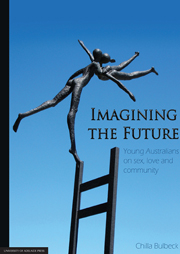Book contents
- Frontmatter
- Contents
- Acknowledgements
- Introduction
- 1 Essaying difference: Comparing essays across the sub-samples
- 2 Learning from their parents: Inter-generational change and continuity
- 3 Emotional literacy and domestic relations
- 4 Global visions and cramped horizons: Stories of class
- 5 ‘Intimate’ citizenship?
- Conclusion: Equality in the rhetoric, difference in reality
- Appendix 1 The questionnaires
- Appendix 2 The sample
- Appendix 3 Survey statistics
- References
- Index
Conclusion: Equality in the rhetoric, difference in reality
Published online by Cambridge University Press: 05 June 2013
- Frontmatter
- Contents
- Acknowledgements
- Introduction
- 1 Essaying difference: Comparing essays across the sub-samples
- 2 Learning from their parents: Inter-generational change and continuity
- 3 Emotional literacy and domestic relations
- 4 Global visions and cramped horizons: Stories of class
- 5 ‘Intimate’ citizenship?
- Conclusion: Equality in the rhetoric, difference in reality
- Appendix 1 The questionnaires
- Appendix 2 The sample
- Appendix 3 Survey statistics
- References
- Index
Summary
in terms of this book and everything with young people I think that it should really be taken into account, into what we do have to say, because we are the new generation coming through and we hold the future … that's what our nation's going to be like tomorrow. (Anna, working class government high school student, Sydney)
Young Australians express a discourse of equality or sameness, for example in relation to gender, class and — to a lesser extent — culture and sexuality, while experiencing and living material realities of difference deriving from these structural factors. Young people claim to live in a world of gender equality, even as they continue to cherish performances of gender difference. They (and indeed their parents) do not understand the world in terms of class relations, but proclaim that everyone is ‘the same’, even as they are aware of fine distinctions in economic resources and cultural capital. Race and ethnic-based disadvantage is explained as either intolerance on the part of the mainstream and/or individual failure on the part of the marginalised.
These findings, concerning the tensions between a discourse of equality and a reality of difference, arose out of my project to explore changes in young people's experience and understanding of gender relations in the light of changes won in part by feminist activism and circumscribed in the main by globalising economies and neoliberal polities. Based on a comparison of Anne Summers' study of young women in 1970 with my sample of young people in 2000–2006, my first comparison was intergenerational.
Information
- Type
- Chapter
- Information
- Imagining the FutureYoung Australians on sex, love and community, pp. 207 - 214Publisher: The University of Adelaide PressPrint publication year: 2012
